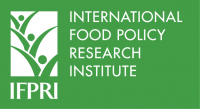
Precision geospatial analysis highlights development gaps – now we need precision solutions
This piece originally appeared on IFPRI.org. By Purnima Menon
Two new studies published in the journal Nature map recent progress made on improving child health and education across Africa at a level of detail that provides a powerful new tool for improving development outcomes in Africa. The studies find that many areas—particularly around major cities—have made tremendous progress in improving both child health and educational outcomes. But the study also highlights stark inequalities across the continent, and the findings show no single country is likely to completely end childhood malnutrition within its borders by the Sustainable Development Goal (SDG) deadline of 2030.
As former UN Secretary General Kofi Annan writes in a Nature commentary piece accompanying the release of these studies: “Such fine-grained insight brings tremendous responsibility to act. It shows governments, international agencies and donors exactly where to direct resources and support.”
The way the studies drill down to these smaller local levels, deeper than previous efforts, demonstrates how localized problems can persist even within larger areas of progress. Now, we must figure out ways to apply this information to create precise interventions that address these inequalities.
The idea that there can be tremendous spatial variability (as well as variations over time) in development outcomes has been a subject of discussion in the development community for several years now. But almost any level of subnational disaggregation is often deemed too large for precision-focused targeting. Now that the capacity exists to perform the precise level of analysis highlighted in this Nature article, there is a path to begin discussions about what precision public health or precision development might look like.
At the same time, local government boundaries, especially those that signal financial and administrative power, are often well above these smaller geospatial analytic boundaries in many countries. Financial allocations and administrative decisions are made at province or region or district levels in many governments, while these studies map outcomes across the continent in standard 5x5 square kilometer areas. Using this data to consider how to apply it to financing or administrative support decisions is the next task for development practitioners.
As the maps in these studies show, precision public health will be necessary to achieve the global goals to end hunger and poverty by 2030, but the execution of it requires tremendous capability and commitment at local administrative levels.
These studies also show us outcomes, but don’t tell us how the combination of determinants are playing out. We will need more disaggegated data on the coverage of various types of programs, interventions, and services. This would help sharpen both the targeting of actions and the monitoring of changes in coverage and outcomes. Locally-focused diagnostic work is essential in order to accelerate the progress made and reach every last household, mother, and child in ways that reshape the conditions that support better child growth and educational attainment throughout life.
For decades, we have known that investments in nutrition can fuel better educational outcomes later in life, and that the educational attainment of women is crucial not only to their individual health and wellbeing, but also for that of their children and their society. These outcomes are intricately connected, and addressing them together can provide tremendous spillover benefits.
Purnima Menon is a Senior Research Fellow with IFPRI's Poverty, Health and Nutrition Division, based in New Delhi.
